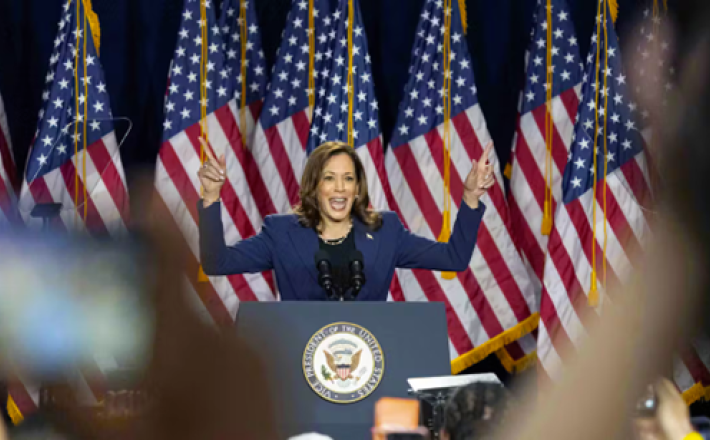Race, gender and politics: Is the United States ready for a Black woman president?
Source: The Conversation
Shirley Chisholm, a Democratic congresswoman, was the first African American woman to run for president of the United States. Sixty years later, Kamala Harris will become the first Black and South Asian American woman to be nominated for president by a major party. Is the United States poised to elect her?
Chisholm, from Brooklyn, N.Y., first ran for office in 1964 — the year both Harris and I were born (the vice president on Oct. 20 and me on Oct. 30). When Chisholm began her presidential campaign in 1972, Harris and I were probably more focused on our toys and our friends, but I was fascinated by politics and aware of Congresswoman Chisholm.
For Black women of my generation, Black women political leaders were few and far between in the 1960s and ’70s, and the numbers remain below our percentage of the population.
Black women represent 7.7 per cent of the total U.S. population, according to the U.S. Census. The Center for American Women and Politics (CAWP) reports that 5.4 per cent of all voting members of Congress identify as Black women. Nonetheless, the situation has improved greatly compared to 1968, when Chisholm became the first Black woman elected to U.S. Congress.
Read here the full article published by The Conversation on 24 July 2024.
Image by The Conversation

Shirley Chisholm, a Democratic congresswoman, was the first African American woman to run for president of the United States. Sixty years later, Kamala Harris will become the first Black and South Asian American woman to be nominated for president by a major party. Is the United States poised to elect her?
Chisholm, from Brooklyn, N.Y., first ran for office in 1964 — the year both Harris and I were born (the vice president on Oct. 20 and me on Oct. 30). When Chisholm began her presidential campaign in 1972, Harris and I were probably more focused on our toys and our friends, but I was fascinated by politics and aware of Congresswoman Chisholm.
For Black women of my generation, Black women political leaders were few and far between in the 1960s and ’70s, and the numbers remain below our percentage of the population.
Black women represent 7.7 per cent of the total U.S. population, according to the U.S. Census. The Center for American Women and Politics (CAWP) reports that 5.4 per cent of all voting members of Congress identify as Black women. Nonetheless, the situation has improved greatly compared to 1968, when Chisholm became the first Black woman elected to U.S. Congress.
Read here the full article published by The Conversation on 24 July 2024.
Image by The Conversation